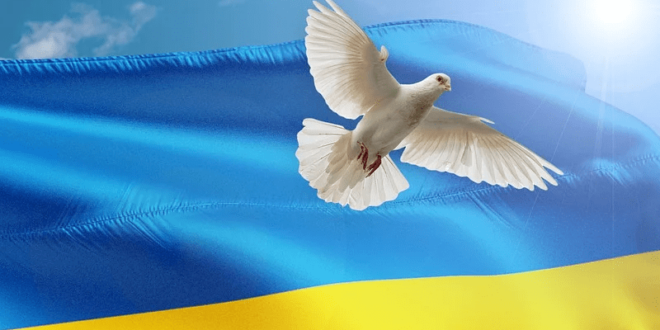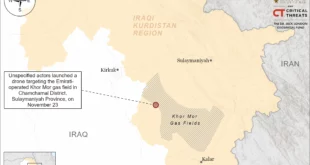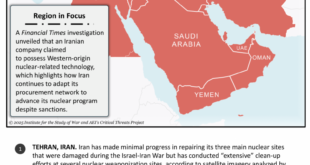Over the last year and particularly in the last several weeks, both Ukrainian and Russian officials have insisted that they have no interest in a frozen conflict. Kyiv has ever more pointedly claimed that Ukraine could not survive such an arrangement, and Russia has declared that any peace accord must address the “underlying causes” of the conflict (President of Ukraine, December 19, 2024; Kremlin.ru, March 13).
That might seem to be the end of the matter, but moving in the direction of a ceasefire toward a frozen conflict, one in which there is no final settlement outside of a written agreement or a continuation of fighting, is perhaps the only scenario in which Russia’s war against Ukraine can be quieted in the short term. This is a timetable that the third participant in these negotiations, the United States, appears to be committed to and an outcome that Washington would likely declare as a peace settlement (see EDM, March 21). While making the argument against a freeze to affect negotiations, Moscow is likely to escalate military aggression against Ukraine if peace talks do not go its way.
In the past, U.S. commentators have suggested, and Ukrainian and Russian outlets have echoed, that the United States might be interested in establishing a frozen conflict in Ukraine (e.g., Kommersant, May 18, 2023). This frozen conflict scenario would be one in which the guns would fall silent, but for which there would be no final political settlement—at least not immediately. As those stories have become more frequent, officials in both Kyiv and Moscow have signaled that neither has any interest in such an outcome. These signals are entirely to be expected during negotiations when each side hopes to win over others and get its way but also suggest how each side would respond if forced to accept a frozen conflict arrangement (Tsargrad, May 24, 2023; Russian Council on International Affairs, April 22, 2024; Topcor.ru, March 17).
Ukrainian President Volodymyr Zelenskyy has emphasized that his country could not exist under such an arrangement, and senior Moscow officials have insisted they cannot accept it either, arguing that there cannot be peace unless the underlying causes of the conflict are addressed (News.mail.ru, December 20, 2024; Gazeta.ru, April 2).
Zelenskyy’s words clearly indicate that he and other Ukrainians would consider such an outcome a sell-out and would fight on as best they could. Senior Russian officials also warn that declaring the conflict frozen could lead to an escalation. This is an indication that strongly suggests Moscow, expecting Ukrainians to fight on, would escalate the conflict itself, as it has done in the case of other frozen conflicts on the former Soviet space (RBC, December 12, 2024; Gazeta.ru March 20, April 2; RIA Novosti, April 2; and Rossotrudnichestvo, April 7). Consequently, seeking to end Russia’s war against Ukraine by freezing the conflict is almost certainly not going to work, but would at best represent a pause before more fighting there and elsewhere.
For many who are unfamiliar with the concept of “frozen conflicts” as they have emerged in the post-Soviet space, the idea of freezing the fighting along the current front lines and establishing a ceasefire that is more or less permanent may seem superficially attractive. After all, doing so could seemingly allow passions to cool and provide more time for reflection on what arrangements might lead to a more durable settlement. Closer attention to why other conflicts have been “frozen” and why “freezing” them has not prevented further violence, however, clearly indicates that the very idea of applying a frozen conflict model to Russia’s war against Ukraine is not only inappropriate but would almost certainly quickly collapse, no matter how much some might celebrate it as an achievement of peace. In such a scenario, Moscow would renew its aggression, and the Ukrainians would continue to fight to save their country.
Adriana Cuppuleri, an Italian scholar of frozen conflicts in the post-Soviet space, acknowledges that there is no universal agreement about the definition of frozen conflicts. According to Cuppuleri, the term has been “most often” used to categorize situations where armed conflicts have been stilled without a peace treaty between the sides and where the conflicting parties are “usually internationally recognized states on the one side and de facto states on the other.”
Consequently, Cuppuleri continues, “territorial issues, minority rights, and the autonomy or independence of ethnic groups constitute the core issues” of such conflicts. Critically, she notes that “the notion emerged mainly following the dissolution of the Soviet Union and the birth of several successive states” (“Russia and Frozen Conflicts in the Post-Soviet Space,” Palgrave Encyclopedia of Peace and Conflict Studies, 2020). (On these frozen conflicts, which include Nagorno-Karabakh, Transnistria, South Ossetia, and Abkhazia, see per Concordiam, 2020; Ava.md, April 2, 2021).
Russia’s war against Ukraine does not easily fit into any honest reading of Cuppuleri’s definition of the term “frozen conflict” except for the fact that it involves a post-Soviet state. The conflict is not between a state and a sub-state actor, except in Moscow’s understanding. Ukraine, like the Russian Federation, is a recognized sovereign state by the international community. It is also not about ethnic groups, except in the Russian understanding, which, following Putin’s line, argues that Ukrainians are not a separate ethnic group but rather a branch of Russians who have been misled into thinking otherwise (Kremlin.ru, July 12, 2021).
Moreover, Russia’s war against Ukraine is not a conflict that can be solved by declaring it frozen. Both sides are prepared to continue the fight, just as has been true in the other “frozen conflicts” that some have thought freezing would be enough to end. Russian intervention—as in the case of Abkhazia and South Ossetia in the South Caucasus and Transnistria in the case of Moldova and Moscow’s support for Azerbaijan, which intervened militarily to end the Karabakh “frozen conflict” in the South Caucasus—are an object lesson of what would likely happen in Ukraine after the world’s attention turned away.
Many of the most serious mistakes made in foreign affairs occur when victory is declared and then attention is turned away from the conflict. This leads to a failure to recognize that such statements do not end states’ ambitions, interests, and responsibilities. A frozen conflict model in Ukraine would be a temporary reprieve from hostilities that could buy time for all the negotiating parties to make a more durable peace. As it has done in the past with other frozen conflicts, Moscow is likely to exploit the situation as international attention inevitably drifts away. A ceasefire should not distract from the root causes of Putin’s war against Ukraine that would need to be resolved.
 Eurasia Press & News
Eurasia Press & News



